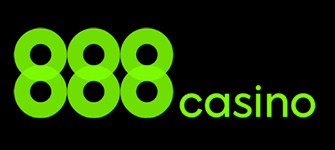Roulette Bets and Odds
Here you can find detailed information about roulette bets and odds. Among all the various table games usually found on the casino floor, roulette is without the doubt the trickiest one there is! This is not because the game is complicated in any way, shape or form; but when you have a house edge as high as 5.26%, you know exactly how ‘bad’ this game truly is. We can see this plain and simple in the bets/odds system listed below. Casino roulette is definitely not for players who are still learning the ropes, so to speak; but rather for more developed and mature audiences who can appreciate its gaming complexity.
- ✓ What Is Each Bet Worth?
- ✓ Inside Bets
- ✓ Outside Bets
- ✓ House Edge
- ✓ Calculating the House Edge
- ✓ French and European Roulette
Overview
We cannot start this presentation without first mentioning the basics behind the odds that govern the end payout. First of all, there are 36 different numbers you can bet on, plus one/two house numbers, colloquially known as a zero and/or double zero. Whether or not there would be a second house number depends solely on the style of roulette practices. Now it would be a good time to mention that there are 3 basic forms of roulette: French roulette, European roulette and American roulette. Each variation of the game boasts its own house edge and winning odds.
What Is Each Bet Worth?
What makes roulette so attractive to new gamblers is the wheel itself (the word “roulette” comes from French and it means ‘small wheel’). It is pretty alluring I admit, but the wheel is only a tool used for generating random numbers, and the real gaming experience comes from the bets themselves. There are a lot of different bets to choose from, each holding its unique set of odds payouts. Before we look at those, let me first remonstrate to our audiences what a basic (double-zero) roulette layout looks like.
As we can see, there are a lot of different numbers to choose from. As confusing as a lot of them may be at this point, all markings on the layout are somehow related to the betting system itself. The bets are grouped into two major categories – inside and outside bets.
Inside bets pay way more than outside bets, but the odds of hitting an inside bet are less probable than those of an outside bet. On the other hand, outside bets pay way less than their inside counterparts, but they are much more likely to be successful. This gives us options when it comes to playing roulette. We can take the high risk/high reward approach or alternatively, opt-in for a more stable and less risk-prone experience. Of course, if you wish to change things up that is always a possibility from one spin to the next. A player can make as many bets as they need; both inside and outside, and all in a single spin!
*Note that in most places, I will only write the American roulette odds and not the French/European variety. I do this because it is better to learn the hardest/most unfair variation of the game (American roulette) than the easiest (French roulette). I will mention all the different variations and their odds, right after these basics.
Inside Bets
These are referred to as ‘inside bets’ because players are actually placing their chips inside the numbered grid.
Single Number – Also known as a Straight Bet, this wager has a 2.63% chance of success (2.70% using the Single Zero Layout). The odds are naturally against the player; but the payout in this situation would be 35:1, which it would seem makes it all worthwhile. An example of a Straight Bet would be – 20, black.
Two Numbers – Professionals call this bet the ‘Split Bet’; because the player gets to place his bets on the line splitting two neighbouring numbers (splitting the chips so to speak). Players can only place a split bet on two adjacent numbers; although they are more than welcome to place two straight number bets anywhere on the layout. The chance of landing a Split is 5.26%. (5.41% European/French Single Zero Layout). An example of a split bet would be 7, 8. A Split bet pays 17:1 in all versions of roulette.
Three Numbers – Choosing one whole line to bet on is sure to bring those odds up a bit. The odds of winning a Street/Line Bet (any 3 numbers that make up a line) is 7.89% (8.11% in European and French Roulette). The chips are placed on the edge of the line. An example of a street bet would be 10, 11, 12. If you make a successful Street bet, you get to take home a payout of 11:1.
Four Numbers – This bet is also called a ‘corner’ or ‘square’ bet because the player can place his chips on any four (neighbouring) numbers to form a little ‘square’, or ‘corner’ respectively. The odds of winning a corner bet are 10.53% (10.81% in European and French Roulette). An example of a corner bet would be 14, 15, 17, 18. If you manage to win a Corner bet, the casino will pay 8:1.
Five Numbers – *Note that this bet is only available in American roulette, where there is a double-zero present. This is probably the worst bet, in terms of the house having the upper hand (7.89% from the usual 5.26%). We will touch more on this later on. The bet is placed on the first five numbers of the layout – 0, 00, 1, 2, 3. The odds of winning Five Number bet are 13.16% and it pays 6:1.
Six Numbers – A six-line bet, or a ‘double street’, refers to placing a bet on 2 neighbouring, 3 number lines; making a total of 6 possible numbers which can come up on the roulette. The probability of landing on either one of these 6 numbers is 15.79% (16.22% in European/French Single Zero Layout). An example of a double street would be 13, 14, 15, 16, 17, 18. Upon a successful hit, the player will receive a 5:1 compensation.
Outside Bets
Unlike inside bets, where the payouts are high but the odds are though at best, outside bets behave quite differently. For one, they do not focus on specific numbers, rather on attributes of the winning number. This gives a lot more flexibility to the game and grants you more options to go about wagering your money. Let’s take a look:
Twelve Numbers (Column) – If you look closely at the roulette layout, you will see three “2-to-1” squares below every column of numbers. There are 3 columns; each column holds a total of 12 non-related numbers. Picking a single column to bet on will only pay 2:1„/, but the odds of actually hitting the lucky number are 31.58% (32.43% in European/French Layout). An example of a column bet would be 2, 5, 8, 11, 14, 17, 20, 23, 26, 29, 32, 35 (second column).
Twelve Numbers (Dozen) – This bet is similar to the column bet, at least in terms of odds and payouts, but differs when it comes to grouping the numbers themselves. There are 3 dozens in the roulette layout; thoughtfully labelled for your convenience. The first dozen (1st 12, or Premiere douzaine (P12) in French layouts) are the numbers between 1 and 12. The second dozen (13-24) is referred to as 2nd 12/Moyenne douzaine (M12) and the 3rd 12 (25-36) – Dernière douzaine (D12). Regardless of which one you choose, the odds are the same everywhere – 31.58% (32.43% in European/French Layout)
Low/High Bets – This time we will be splitting the numbers into 2 groups. The numbers between 1 and 18 are called a low bet (Manque in French Layouts), and the numbers between 19-35 – a high bet (Passe in French Layouts). Split like this, the numbers can only pay off even money, or 1:1. The odds of landing on either high or low lumbers are about 50/50. Minus the house edge, that gives a 47.37% probability of landing the lucky number (48.65% in European/French Layouts)
Odds/Evens – Just like the name suggests, we will be betting whether the number is going to turn up odd or even (Pair ou Impair in French Layouts). The house once again pays even money, and the chances remain 47.37% (48.65% in European/French Layouts), as with all even bets.
Reds/Blacks – Maybe the most popular bet in the world of casino roulette, betting on red or black is what this game is all about! The French call this bet Rouge ou Noir, or ‘red or black’ as the name would suggest. It too pays even money, and the odds of landing on either red or black is 47.37% (48.65% in European/French Layouts).
The House Edge in Roulette
Now that we understand the bets, their payouts and their odds of success, it is time to look at a different aspect of roulette betting. Above, we mentioned that the term house edge and how it affects your experience playing roulette. Here, we will explore exactly what it does and why players despise it so much.
The house edge represents the theoretical advantage that the casino has over players in terms of the odds and payouts of any casino game. As you already know, casinos are highly profitable ventures and it is the house edge that makes all of this possible. So how does it work?
The house edge in roulette comes from the difference between the true odds and casino odds. The true odds are the odds at winning any particular bet, whereas the casino odds are the payout odds. Take, for example, a Straight Up bet in European Roulette. It pays 35:1 if it is successful. In actuality, the odds of making a winning Straight Up bet is 36:1.
How do we determine this? It is rather simple. There are 37 pockets on the wheel and only one of them is eligible to win for this bet. That means that in 36 cases, we lose, and only in 1 do we win. In short, the difference of one between the casino and true odds make the risk higher than the reward. The more you play, the more likely you are to lose money on any particular bet. This is how the house edge works in theory.
Calculating the House Edge in Roulette
The house edge is present in nearly every bet in every casino game out there. But how do we determine its impact on the game? We can measure it and draw our conclusions from then on. Calculating the house advantage in roulette is relatively simple and straightforward. To do so, we use the following formula:
(Odds Against Winning – House Odds) * Probability of Winning * 100 = House Edge
We can apply it to all of the bets in roulette. Let’s take an even-money wager from European Roulette and see how it measures up. When we put in the numbers, the following problem is presented:
(19/18 – 1/1) * 18/37 * 100 = 2.70%
Again, we can do this with other versions of the game. American Roulette features different odds and probabilities due to the extra zero pocket. So if we take an even-money wager from that variation, we get:
(20/18 – 1/1)*18/38*100 = 5.26%
While 5.26% is true for all wagers in American Roulette, there is one exception. The Basket Bet was described above as the worst wager that you can make in the game. This is due to the fact that the bet does not pay as much as it should, even by standard casino odds. When we apply the formula from above to the Basket Bet, we get the following:
(33/5 – 6)*5/38*100 = 7.89%
With such a high house edge, it is no wonder that gamblers all over the world hate this bet. It is bad enough that American Roulette comes with a higher casino advantage, in general, but an additional 2.5% on top of that is considered too much. This is why people avoid American Roulette in favour of the European and French versions.
What Does The House Edge Mean?
As we saw above, the house edge is measured in percentages. What those percentages stand for is the total amount from the table money turnover that the casino keeps. The rest of the money is paid out as winnings to players.
It is always worth bearing in mind that the house edge is primarily theoretical. It does see some application in real-world gambling but only after hundreds of thousands of spins. Therefore, you can certainly get in a few wins every now and then. You just need to remember that the longer you play, the lower your chances of coming out ahead are.
French and European Roulette
Both French and European style roulette are well known for their lenient policies when it comes to landing on the dreaded zero (remember, there is only one zero slot in European/French style layouts/wheels). This leniency comes from two very powerful/convenient rules that are uncommon in American roulette; namely the rules Le Partage and En Prison.
Le Partage – his rule is known outside the French gambling circles as ‘the divide’. Basically, you get a 50% return on all even-money bets (red/blacks, odds/evens, high/low bets), should the ball land on a zero. This lowers the house edge on all even-money bets to 1.35% (from the usual 2.7%).
En Prison – No, this rule doesn’t send you directly to prison, if that is what you were thinking. Rather, if the ball lands on zero, all even bets become ‘imprisoned’ – and the players must wait until the next spin to get them back. Basically, you make the exact same bet ($5 on black, for example), only this time if you win, you only receive the original bet amount back. You do not generate a profit from en prison.
If by a stroke of faith, the ball lands on a zero a second time, the bet can be imprisoned again (double imprisonment), in which case the wheel will be spun again and again, until something other than zero shows up; or the player loses his bet altogether. The house edge is reduced by half, on account that you do not lose your money outright but are given a 50-50 chance to get it back.


 PlayOJO Casino
PlayOJO Casino 888casino
888casino All British Casino
All British Casino Casino Action
Casino Action UK Casino Club
UK Casino Club